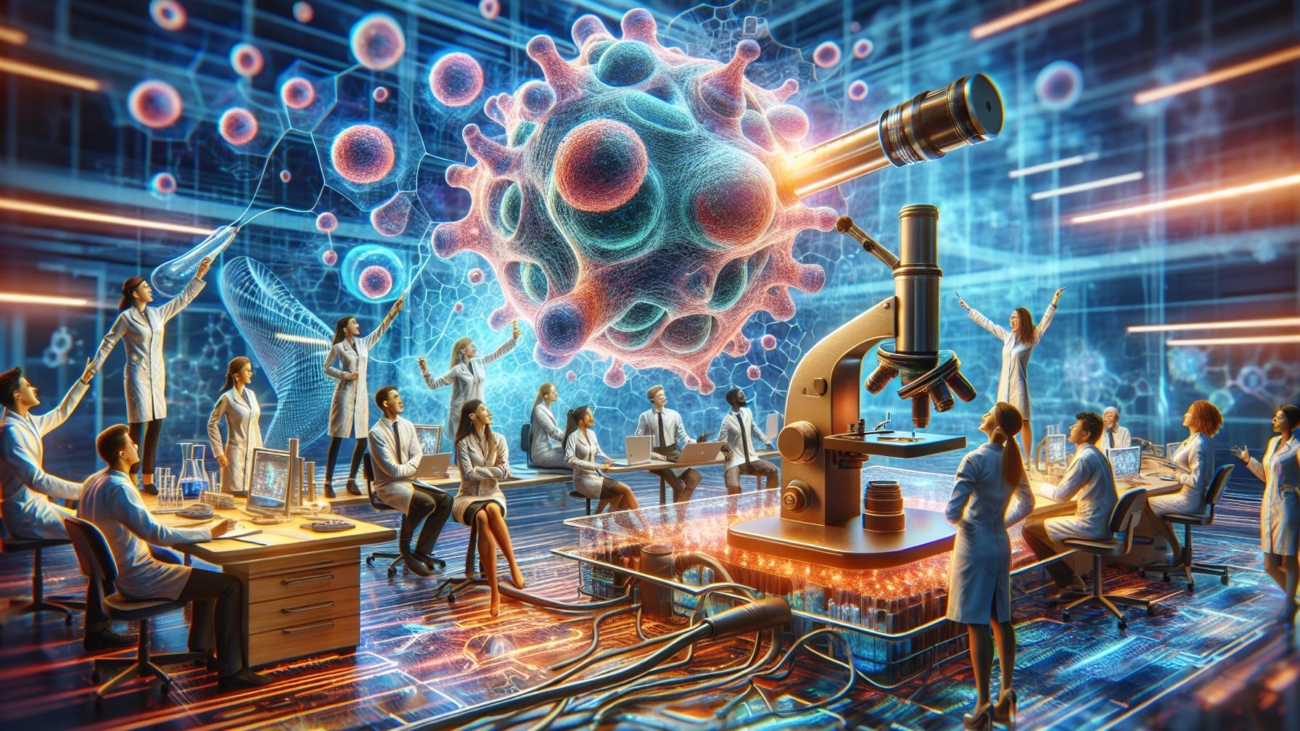A research team led by Anna-Karin Gustavsson at Rice University has created an innovative imaging system that could significantly enhance our comprehension of cellular structures at the nanoscale level. The system, dubbed soTILT3D — an acronym for single-objective tilted light sheet with 3D point spread functions (PSFs) — marks a significant advancement in super-resolution microscopy. It facilitates swift and precise 3D imaging of various cell structures, while maintaining flexibility and control over the cell’s external environment. The study has been recently published in Nature Communications.
Nanoscale cell study is key to understanding the complex mechanisms influencing cell behavior. The insights it provides are crucial to our understanding of health and disease, revealing how molecular interactions contribute to cell functions. These insights pave the way for targeted therapies and a deeper understanding of disease development.
Traditional fluorescence microscopy has been instrumental in studying cell structures, but its capabilities are limited by light diffraction, which prevents it from resolving features smaller than several hundred nanometers. Furthermore, the current single-molecule super-resolution microscopy techniques often face challenges from high background fluorescence and slow imaging speeds, particularly with thick or complex cell samples. These existing techniques also lack the ability to precisely control the sample environment.
The soTILT3D system addresses these issues directly. By combining an angled light sheet, a nanoprinted microfluidic system, and state-of-the-art computational tools, soTILT3D significantly enhances imaging precision and speed. This allows clearer visualization of the interaction between different cell structures at the nanoscale.
The soTILT3D system employs a single-objective tilted light sheet to selectively illuminate thin slices of a sample, effectively enhancing contrast by reducing background fluorescence. This is particularly useful with thick biological samples like mammalian cells. The system also incorporates a specially designed microfluidic system with an embedded customizable metalized micromirror. This allows precise control over the cell’s external environment and enables rapid solution exchange. Moreover, the system uses computational tools such as deep learning to analyze higher fluorophore concentrations, thereby improving imaging speed and accuracy.
The soTILT3D system has demonstrated significant improvements in imaging precision and speed. Compared to traditional epi-illumination methods, its angled light sheet improves the signal-to-background ratio for cellular imaging by up to six times. This enhances contrast and allows precise nanoscale localization.
In terms of speed, soTILT3D delivers a tenfold increase when combined with high emitter density and deep learning analysis. This enables researchers to capture detailed images of complex structures in a fraction of the usual time. Furthermore, the system supports accurate whole-cell 3D multitarget imaging, capturing the distributions of multiple proteins within an entire cell and measuring nanoscale distances between them.
The soTILT3D system has wide-ranging applications across various fields. It can image complex samples, including stem cell aggregates, extending its application beyond individual cells. The system’s biocompatibility also makes it suitable for live-cell imaging, allowing scientists to study cellular responses to different stimuli in real time.
Gustavsson expressed hope that the advancements brought about by the soTILT3D system would enhance studies in biology, biophysics, and biomedicine. This study was supported by the National Institute of General Medical Sciences of the National Institutes of Health, the Welch Foundation, and startup funds from the Cancer Prevention and Research Institute of Texas.
